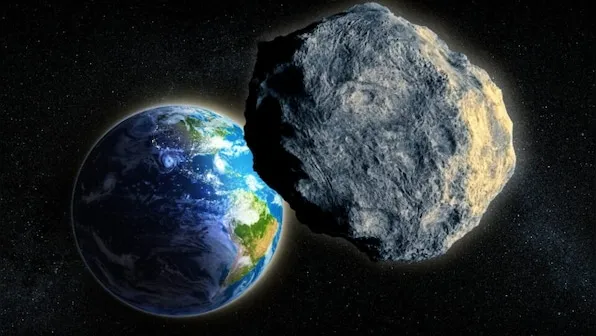In the early hours of Wednesday morning, a massive asteroid will make a close approach to Earth, sparking interest among astronomers and scientists. Labeled 2013 WV44, the asteroid measures approximately 300 feet in length, similar to the Statue of Liberty, and is traveling at a remarkable speed of 7.3 miles per second. Fortunately, it will pass by our planet at a safe distance of about 2 million miles, which, although considerable, is relatively close in terms of the vast expanse of our solar system.
The asteroid’s trajectory has been tracked by NASA’s Center for Near Earth Object Studies for the past decade, and scientists have calculated its precise path to ensure that it will not pose a threat to our planet. Asteroids are a common occurrence in Earth’s neighborhood, and most of them do not pose a serious threat. However, the possibility of a catastrophic asteroid strike serves as a reminder of the importance of continuous monitoring and preparedness.
NASA and its European counterpart, ESA, invest significant resources in tracking and analyzing asteroids, as well as developing technologies to deflect them if necessary. Last year, NASA tested a system designed to alter the trajectory of an asteroid, known as the DART mission, which successfully altered the course of a non-hazardous asteroid. This achievement paves the way for further refinement and development of the technology to ensure its effectiveness in the event of a potentially catastrophic asteroid encounter.

Massive Asteroid 2013 WV44
According to NASA, a relatively small number of near-Earth objects are large enough and approaching close enough to Earth to warrant close observation. This is due to the gravitational influence of the planets, which can cause an asteroid’s orbital path to evolve into an Earth-crossing orbit, increasing the risk of collision. While the prospect of an asteroid encounter is unsettling, it is crucial for scientists to continue monitoring and studying these celestial bodies to better understand their movements and potential courses.
In the meantime, 2013 WV44’s flyby will provide an opportunity for scientists to gather more data and refine their understanding of the asteroid’s composition, shape, and movement. Although the asteroid will not cause any disruptions to our daily lives, the close encounter serves as a reminder of the importance of continued research and preparedness in the event of a potentially catastrophic asteroid encounter. With the advancement of technology and scientists’ dedication to monitoring the skies, we are better equipped to face the threats posed by asteroids, ensuring a safer and more secure future for our planet.









































